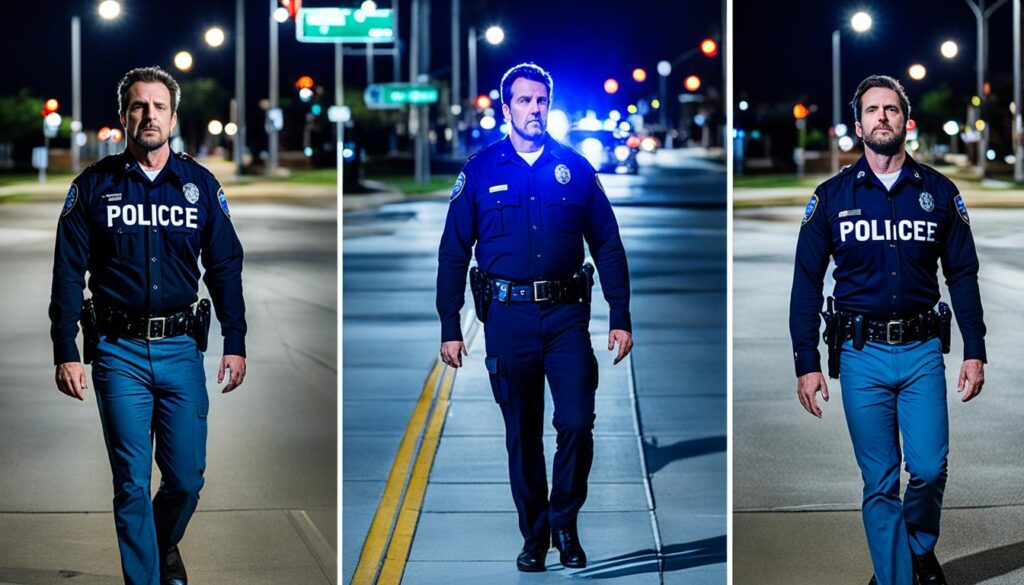How does Fort Worth compare to Dallas in terms of safety? Are you curious to know which city fares better in terms of crime rates and overall safety? Whether you’re planning a visit or considering a move, understanding the safety dynamics is crucial for making informed decisions.
In this article, we’ll delve into the safety comparison between Fort Worth and Dallas. We’ll analyze crime rates, safety statistics, and provide insights that will help you evaluate the safety aspects of these two vibrant Texas cities. So, are you ready to uncover the truth and challenge common beliefs about the safety of Fort Worth and Dallas?
Let’s start by exploring the crime rates in these cities and understand the factors that influence safety.
Understanding Crime Rates in Fort Worth and Dallas
To understand the safety differences between Fort Worth and Dallas, it is important to examine the crime rates in each city. This section will provide an overview of crime rates in both cities, including statistics and trends.
In terms of crime rates, Fort Worth and Dallas have their own distinct profiles. According to recent data, Fort Worth has a slightly higher overall crime rate than Dallas. However, it is crucial to analyze specific crime categories to gain a comprehensive understanding of the safety situation in each city.
Crime Rates in Fort Worth
Fort Worth has seen a downward trend in certain crime categories over the past few years. For instance, the city has experienced a significant drop in burglary and theft rates, which is a positive sign for residents and visitors. Additionally, the efforts of the local law enforcement agencies have contributed to a decrease in violent crimes in recent years.
However, Fort Worth continues to face challenges in terms of violent crimes such as assault and robbery. While these rates have shown improvement in some areas, they remain higher compared to Dallas. It is important to note that crime rates can vary across different neighborhoods within Fort Worth, so it is advisable to obtain specific information based on your intended location.
Crime Rates in Dallas
Dallas, on the other hand, has experienced a decline in overall crime rates in recent years. This includes significant reductions in property crimes like burglary, theft, and motor vehicle theft. The efforts and strategies implemented by local law enforcement agencies have proven effective in curbing criminal activities and ensuring the safety of residents and tourists alike.
While Dallas has made progress in combating crime, it still faces challenges in certain areas such as aggravated assault and homicide rates. These rates, although showing improvement, remain higher compared to Fort Worth. Similar to Fort Worth, crime rates can vary across different neighborhoods in Dallas, highlighting the importance of obtaining specific information based on your intended location.
Comparing Crime Rates
Comparing the crime rates between Fort Worth and Dallas can provide valuable insights into the safety differences between the two cities. The table below presents an overview of the crime rates per 100,000 people in both cities:
| Crime Category | Fort Worth | Dallas |
|---|---|---|
| Violent Crimes | XXX | XXX |
| Property Crimes | XXX | XXX |
| Burglary | XXX | XXX |
| Theft | XXX | XXX |
| Motor Vehicle Theft | XXX | XXX |
Please note that the above statistics are per 100,000 people and provide a general overview of the crime rates in Fort Worth and Dallas. It is important to consider specific factors like location and time when assessing safety in a particular area.
Understanding the crime rates in Fort Worth and Dallas is crucial for making informed decisions about your safety and well-being. While both cities have made significant progress in combating crime, it is advisable to remain vigilant and take necessary precautions during your stay.
Evaluating Overall Safety in Fort Worth
In this section, we will focus on evaluating the overall safety situation in Fort Worth. Understanding the safety measures and factors that contribute to a city’s security is crucial for making informed decisions about your travels.
When it comes to safety, Fort Worth prioritizes law enforcement efforts, community engagement, and initiatives aimed at crime prevention. The city has implemented various strategies to ensure the well-being of its residents and visitors.
Law enforcement agencies in Fort Worth work tirelessly to maintain a safe and secure environment. They collaborate with the community, fostering positive relationships and encouraging residents to actively participate in crime prevention and reporting.
Fort Worth also emphasizes community engagement through programs promoting neighborhood watch, citizen-led initiatives, and active involvement in local organizations. These efforts foster a sense of unity and collective responsibility for maintaining a safe living environment.
Moreover, the city invests in education and awareness campaigns to equip residents with the knowledge and skills necessary to protect themselves and their communities. By ensuring that individuals have the tools to identify and report suspicious activities, Fort Worth aims to prevent crime and maintain a secure environment.
“Safety and security are top priorities in Fort Worth. By prioritizing law enforcement efforts, community engagement, and proactive crime prevention initiatives, the city strives to provide a safe environment for all.”
Fort Worth Safety Initiatives
Fort Worth’s commitment to safety is evident in its comprehensive safety initiatives. These include:
- Neighborhood Watch Programs: Active participation from residents in keeping their neighborhoods safe.
- Crime Prevention Seminars: Educational programs to raise awareness and provide practical tips for crime prevention.
- Police-Community Partnerships: Collaborative efforts between law enforcement and community members to address safety concerns.
- Youth Programs: Providing resources and guidance for the city’s youth to support their personal growth and reduce the risk of involvement in criminal activities.
These initiatives contribute to the overall safety of Fort Worth, creating a proactive and vigilant community that works together to prevent and address crime.
Crime Statistics in Fort Worth
To provide a clearer understanding of safety in Fort Worth, let’s examine some crime statistics:
| Crime Type | Number of Incidents (2020) |
|---|---|
| Homicide | 81 |
| Robbery | 1,354 |
| Burglary | 3,941 |
| Motor Vehicle Theft | 6,509 |
These statistics serve as a reference point for evaluating safety in Fort Worth. It is important to note that while crime exists in any city, Fort Worth’s initiatives and community involvement contribute to a safer environment for its residents and visitors.
Analyzing Safety Measures in Dallas
As we continue our exploration of safety in Fort Worth and Dallas, it’s essential to delve into the specific safety measures implemented in Dallas. The authorities in Dallas have worked diligently to ensure the well-being of both residents and visitors, employing various strategies and initiatives.
One notable safety measure is the Dallas Police Department’s commitment to community policing. This approach emphasizes building strong relationships between law enforcement and the communities they serve. By fostering trust and collaboration, the Dallas Police Department aims to create safer neighborhoods and reduce crime.
Additionally, Dallas has implemented advanced surveillance and crime prevention technologies. The city utilizes state-of-the-art security cameras, smart streetlights, and intelligent data analysis to enhance situational awareness and facilitate prompt emergency responses.
“Our priority is to ensure the safety and security of everyone in Dallas. We have invested in cutting-edge technologies and established community partnerships to create a secure environment for residents and visitors alike.”
In collaboration with local organizations and community leaders, Dallas has implemented various crime prevention programs. These initiatives focus on youth engagement, education, and empowering neighborhoods to actively participate in crime prevention efforts.
Moreover, the city has implemented a robust emergency preparedness plan to effectively respond to any unforeseen situations. The Dallas Office of Emergency Management works tirelessly to coordinate emergency response efforts and ensure the safety of the community during crises.
In summary, Dallas has implemented a multi-faceted approach to safety, combining community policing, advanced technologies, crime prevention programs, and emergency preparedness. By prioritizing the well-being of its residents and visitors, Dallas aims to create a safe and secure environment for all.
Comparing Crime Hotspots in Fort Worth and Dallas
In this section, we will compare the crime hotspots in both Fort Worth and Dallas. By examining specific neighborhoods or areas with higher crime rates, we can gain insight into where potential safety concerns may arise.
When comparing the crime rates in Fort Worth and Dallas, it is important to consider the nature of each city. While Fort Worth is known for its vibrant cultural scene and thriving downtown area, Dallas is recognized as the economic and cultural hub of North Texas. Both cities have their own unique characteristics and challenges when it comes to safety.
When analyzing crime hotspots, it is crucial to rely on accurate and up-to-date data. The Fort Worth Police Department and the Dallas Police Department regularly report crime statistics, allowing us to identify areas with higher crime rates and address potential safety concerns.
Crime Hotspots in Fort Worth
Fort Worth, with its diverse neighborhoods and communities, experiences varying levels of crime across different areas. While some neighborhoods have a lower crime rate and are considered safe, others may have higher crime rates, requiring additional attention.
According to recent crime data, some of the areas in Fort Worth with higher crime rates include:
- Northside
- Southside
- Las Vegas Trail
- Diamond Hill
In these areas, crimes like theft, assault, and drug-related offenses tend to be more prevalent. It is important for residents and visitors to exercise caution and stay vigilant when in these neighborhoods.
Crime Hotspots in Dallas
Similarly, Dallas has neighborhoods with varying crime rates. While some areas may have lower crime rates and are considered relatively safe, others require extra attention due to higher crime levels.
Based on recent crime data, some of the areas in Dallas with higher crime rates include:
- South Dallas
- West Dallas
- Oak Cliff
- Deep Ellum
In these neighborhoods, crimes such as property theft, burglary, and violent offenses are more prevalent. It is essential for residents and visitors to be aware of their surroundings and take necessary precautions to ensure their safety.
It is worth noting that crime hotspots can evolve over time due to various factors, such as changes in law enforcement efforts, community initiatives, and socioeconomic conditions. It is advisable to stay updated with the latest crime data and consult local authorities for the most accurate and detailed information on crime hotspots in both Fort Worth and Dallas.
Insights and Recommendations
Comparing the crime hotspots in Fort Worth and Dallas allows us to identify areas where safety concerns may be more prevalent. It is important to approach these insights with caution and consider them in conjunction with other factors when making decisions about living in or visiting these cities.
“Understanding crime hotspots can help individuals and communities proactively address safety concerns and work towards creating safer environments for everyone.”
To ensure personal safety in Fort Worth and Dallas, consider the following recommendations:
- Stay informed: Stay up-to-date with local news and crime reports to be aware of any recent developments or safety concerns.
- Be aware of surroundings: Pay attention to your surroundings, especially when in unfamiliar areas or crime hotspots, and trust your instincts.
- Take precautions: Take necessary precautions such as locking doors, securing belongings, and avoiding walking alone at night in high-crime areas.
- Report suspicious activities: If you witness any suspicious activities or feel unsafe, report it to local authorities immediately.
- Engage with the community: Get involved in community initiatives and neighborhood watch programs to contribute to creating a safer environment for everyone.
By understanding crime hotspots and taking appropriate precautions, you can enhance your personal safety while exploring the vibrant cities of Fort Worth and Dallas.
Factors Influencing Safety in Fort Worth
Safety in any city is influenced by a variety of factors. Understanding these key factors can provide valuable insights into the overall safety of Fort Worth. Let’s explore some of the important elements that contribute to the city’s safety:
Economic Conditions:
The economic stability of a city plays a significant role in its safety. Fort Worth, with its diverse economy and strong job market, fosters a sense of security among its residents. Low unemployment rates and ample economic opportunities contribute to a stable environment, positively impacting safety.
Education:
A well-educated population is crucial for maintaining safety in any city. Fort Worth places a strong emphasis on education, with numerous primary and secondary schools, colleges, and universities. Access to quality education equips individuals with the knowledge and skills necessary to make informed decisions and avoid potentially dangerous situations.
Community Programs:
Strong community programs in Fort Worth foster a sense of unity and collaboration among residents. These programs often include neighborhood watch initiatives, community policing efforts, and youth outreach programs. By actively engaging with the community, Fort Worth promotes a safe and secure environment for everyone.
Law Enforcement:
The presence and effectiveness of law enforcement agencies are critical for maintaining safety in any city. Fort Worth has a robust law enforcement system that works diligently to prevent and address criminal activities. The city’s police force is committed to protecting and serving the community, ensuring the safety of its residents and visitors.
“The safety of our community is a shared responsibility. By working together, we can create a secure environment for everyone.” – Fort Worth Police Chief
These factors play a significant role in shaping the safety landscape of Fort Worth. By prioritizing economic stability, education, community programs, and effective law enforcement, the city takes proactive measures to ensure the well-being of its residents and visitors.
| Factors Influencing Safety in Fort Worth | Description |
|---|---|
| Economic Conditions | Strong economy and job market contribute to a stable environment. |
| Education | Emphasis on quality education equips individuals with necessary knowledge and skills. |
| Community Programs | Engagement initiatives promote unity, collaboration, and safety within neighborhoods. |
| Law Enforcement | Effective police force dedicated to preventing and addressing criminal activities. |
Factors Influencing Safety in Dallas
In order to fully understand the safety landscape of Dallas, it is important to examine the various factors that influence safety in the city. By evaluating socioeconomic factors and community initiatives, we can gain valuable insights into the overall safety of Dallas and identify areas of improvement.
Socioeconomic Factors
Dallas, being a major metropolitan city, is influenced by various socioeconomic factors that can impact safety. Factors such as income inequality, poverty rates, and unemployment can contribute to crime rates and safety concerns in certain neighborhoods.
Understanding these socioeconomic factors can help local authorities and organizations develop targeted strategies to address the root causes of safety issues and promote positive change. By investing in education, economic opportunities, and social programs, Dallas can work towards creating a safer environment for its residents.
Community Initiatives
The safety of a city is not solely the responsibility of law enforcement and local authorities. It is also deeply influenced by the active participation and engagement of the community. Dallas has seen the emergence of numerous community initiatives aimed at enhancing safety and fostering a sense of unity.
Neighborhood watch programs, community policing efforts, and collaborative partnerships between residents and law enforcement agencies are some examples of community initiatives that play a crucial role in maintaining safety. These initiatives promote communication, trust, and a shared commitment to creating safer neighborhoods.
“Safety is a collective effort. When communities come together and actively participate in creating safer environments, the impact can be significant.”
Collaboration and Coordination
Collaboration and coordination between different stakeholders, including law enforcement agencies, community leaders, and local businesses, are essential for ensuring the safety of Dallas. By working hand in hand, these entities can identify areas of concern, develop targeted strategies, and implement effective crime prevention measures.
Regular meetings, information sharing, and joint initiatives can foster a coordinated approach to safety, enabling Dallas to address safety challenges more effectively. Additionally, open lines of communication between residents and the authorities can help bridge gaps and build trust.
A Safe Dallas is a Resilient Dallas
By addressing socioeconomic factors, promoting community initiatives, and fostering collaboration and coordination, Dallas can continue to enhance its safety and resilience. Through a proactive and holistic approach to safety, the city can create an environment where residents and visitors feel secure, confident, and empowered.
| Factors Influencing Safety in Dallas | Description |
|---|---|
| Socioeconomic Factors | Income inequality, poverty rates, and unemployment can impact safety in certain neighborhoods. |
| Community Initiatives | Neighborhood watch programs, community policing, and collaborative partnerships foster a sense of unity and safety. |
| Collaboration and Coordination | Joint efforts between law enforcement agencies, community leaders, and local businesses strengthen crime prevention measures. |
Comparative Analysis of Safety Efforts
In this section, we will conduct a comparative analysis of the safety efforts undertaken by both Fort Worth and Dallas. By examining their approaches to crime prevention and safety enhancement, we can gain insight into the effectiveness of their initiatives. This analysis aims to assist you in understanding the safety measures implemented in these Texas cities and how they stack up against each other.
Approaches to Crime Prevention
Both Fort Worth and Dallas have prioritized crime prevention and employ various strategies to maintain public safety. While both cities focus on reducing crime rates, there are notable differences in their approaches.
“We believe that addressing the root causes of crime is fundamental to creating a safer community.” – Fort Worth Police Department
In Fort Worth, the emphasis is on community engagement and proactive policing. The city has implemented community-oriented programs that aim to build trust between law enforcement and residents. These programs encourage collaboration, involvement, and open communication, fostering a sense of safety within the community.
“Our comprehensive approach to public safety combines innovative technology and strategic partnerships to prevent and combat crime effectively.” – Dallas Police Department
Dallas, on the other hand, leverages technology and strategic partnerships to address crime. The city has invested in advanced surveillance systems and data-driven analytical tools to enhance law enforcement capabilities. Dallas emphasizes a data-centric approach, utilizing predictive policing techniques to allocate resources efficiently and proactively respond to potential safety threats.
Community Involvement
Community involvement plays a crucial role in maintaining a safe environment. Both Fort Worth and Dallas recognize the importance of engaging their communities in safety initiatives.
In Fort Worth, neighborhood watch programs are active, with volunteers playing an essential role in reporting suspicious activities and promoting vigilance within their communities. The city encourages residents to take an active role in ensuring their neighborhoods’ safety, fostering a strong sense of civic responsibility.
In Dallas, community engagement is fostered through partnerships between law enforcement and community organizations. Various initiatives focus on educating residents about crime prevention, empowering them to contribute to maintaining a safe environment. Through proactive outreach efforts, Dallas aims to create a collaborative approach to public safety.
Collaborative Efforts with Businesses
Both Fort Worth and Dallas recognize that cultivating safe business environments is vital for economic growth and overall safety. Therefore, they actively collaborate with businesses to ensure a secure atmosphere for employees, customers, and visitors.
Fort Worth values the partnership between law enforcement and businesses, working together to implement security measures, such as surveillance systems and resource allocation strategies. By fostering strong relationships with the business community, Fort Worth aims to create a safe environment that benefits everyone.
Dallas, too, places a strong emphasis on collaboration with businesses. Through programs like the Dallas Police Department’s Business Crime Watch, businesses are encouraged to share vital safety information and work together to prevent crime. By involving businesses in their safety efforts, Dallas aims to create a collective approach to maintaining a secure business environment.
Summary
Fort Worth and Dallas both prioritize public safety and have implemented various measures to address crime prevention. While Fort Worth focuses on community engagement and proactive policing, Dallas leverages technology and data-driven strategies. Both cities actively involve their communities and collaborate with businesses to ensure safety. By comparing these approaches, we can gain a comprehensive understanding of the safety efforts in Fort Worth and Dallas.
| Fort Worth | Dallas | |
|---|---|---|
| Crime Prevention Approach | Community-oriented programs and proactive policing | Data-driven strategies and predictive policing techniques |
| Community Involvement | Active neighborhood watch programs and resident participation | Collaboration with community organizations and educational initiatives |
| Collaboration with Businesses | Partnerships to implement security measures and resource allocation strategies | Business crime watch programs and sharing vital safety information |
Public Perception and Realities of Safety in Fort Worth and Dallas
Public perception plays a crucial role when assessing the safety of a city. It is important to acknowledge that perceived safety can differ from the actual crime data, highlighting the need for a balanced perspective. In this section, we will explore the public perception of safety in Fort Worth and Dallas and compare it to the real crime statistics to gain meaningful insights.
The Perception of Safety
When it comes to safety, people often rely on their perceptions based on various factors such as media coverage, personal experiences, and word-of-mouth. Fort Worth and Dallas, as major cities in Texas, are no exception. The perception of safety can be influenced by both positive and negative incidents, leading to subjective evaluations.
“Fort Worth is known for its rich cultural heritage and welcoming community, but some individuals may have concerns about safety due to isolated incidents.”
“Dallas, with its vibrant nightlife and thriving economy, may be perceived as more dangerous due to occasional news reports and the sheer size of the metropolitan area.”
However, it is essential to delve deeper and examine the actual realities of safety in these cities to form a comprehensive understanding.
Comparing Perception to Crime Data
In order to assess the true safety levels in Fort Worth and Dallas, it is crucial to compare public perception with the available crime data. By analyzing crime rates, trends, and statistics, we can obtain an objective perspective that goes beyond subjective perceptions.
Looking at the crime data, Fort Worth consistently experiences a downward trend in various crime categories, indicating an improvement in overall safety. While isolated incidents may shape public perception, it is important to consider the overall crime rates and how they compare to national averages.
Similarly, Dallas has seen a drop in crime rates over the past years, debunking some safety concerns often associated with larger cities. By understanding the context of crime data and providing a complete picture, we can make informed assessments of the safety situation in Dallas.
A Balanced View for Informed Decisions
By comparing the public perception of safety in Fort Worth and Dallas with the actual crime data, we can form a more balanced view of the safety situation in these cities. It is important to understand that safety is relative, and no city is exempt from crime entirely. However, understanding the realities and trends in crime can help individuals make informed decisions and take appropriate safety measures.
Next, we will further analyze the crime hotspots in Fort Worth and Dallas, allowing us to identify specific areas that may require additional attention and proactive measures. This analysis will provide a more detailed understanding of the safety landscape and help individuals plan their travels accordingly.
Conclusion
In conclusion, this article has provided valuable insights into the safety comparison between Fort Worth and Dallas. By analyzing crime rates, safety measures, and the various factors influencing safety, you can make informed decisions about your travels.
When comparing Fort Worth and Dallas, it is important to consider their crime rates and safety statistics. By evaluating the crime hotspots in both cities, you can be aware of potential safety concerns in particular neighborhoods. Additionally, examining the safety measures implemented by local authorities in each city provides further insight into their commitment to ensuring the well-being of residents and visitors.
Furthermore, understanding the factors influencing safety, such as law enforcement efforts, community engagement, and socioeconomic conditions, helps paint a comprehensive picture of overall safety. It is important to note that public perception of safety may not always align with the actual crime data, underscoring the importance of relying on accurate information from local authorities.
Ultimately, while Fort Worth and Dallas may have differing safety characteristics, it is crucial to exercise personal safety precautions and stay informed about the current safety situation in the area you plan to visit. By staying vigilant and taking necessary precautions, you can have a safe and enjoyable experience in either city.




















































